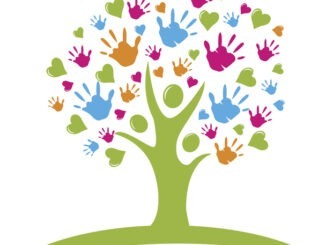
We must all do our part in reaching net zero – here are seven easy and sustainable swaps you can do within your school
CREDIT: This is an edited version of an article that originally appeared on Hope Education
Fostering an environmentally conscious classroom is of paramount importance for school leaders, contributing to both the betterment of the planet and a transformative outlook for the future. An effective approach entails supplying sustainable resources to students while curbing the frequent use of detrimental materials. By doing so, schools not only champion the environment but also impart to children the significance of opting for sustainable alternatives.
To aid SBMs in effecting changes, here are a few suggestions for sustainable substitutions in your classroom. These adjustments may appear minor but collectively pave the way for a greener trajectory.
Minimise Paper Consumption
Taking steps towards a paperless approach in planning lessons and activities can make a substantial difference. This initial stride proves pivotal in the pursuit of sustainable swaps, considering the substantial paper waste schools generate annually.
Multiple strategies can reduce paper usage, ranging from refraining from printing student activities to opting for recycled paper for written assignments. Encouraging students to recycle used paper by providing dedicated bins can also instil responsible habits. Lead by example by diminishing paper-based paperwork and transitioning to digital alternatives.
Replace Plastic Supplies
Plastic stands as a significant contributor to Earth’s pollution, with millions of tonnes ending up in landfills each year. The remedy lies in substituting plastic supplies with more environmentally friendly options like paper or even recycled plastic, which can be used repeatedly.
For instance, you can replace plastic folders or binders with their eco-paper counterparts. Exploring wooden items for the classroom, such as wooden toys for students, presents another eco-conscious choice.
Rethink Playground Equipment
Numerous playground fixtures comprise environmentally harmful materials, including plastic. Consider eco-friendlier alternatives for items like play equipment.
Instead of plastic climbing frames and agility courses, propose wooden alternatives to the school. Transforming discarded tires into agility courses and climbing structures offers another innovative option. Such endeavours enhance children’s motor skills while incorporating an art activity by involving the class in painting the tires.
Rotating and repurposing tires to design new courses can keep children engaged and invigorate the play experience.
Opt for reused or eco-friendly materials when replacing playground equipment; they withstand harsh weather conditions, ensuring durability and longevity. Moreover, sustainable play equipment inspires students to embrace recycled materials in their own endeavours.
In conclusion, transitioning to an eco-friendly classroom is a compelling endeavour for school leaders. By adopting sustainable practices and resource choices, schools foster a greener environment and impart invaluable lessons in sustainability to their students.
Swap stationery items
As a teacher, stationery is one of the most used items in your classroom for your own use and for your pupils. Due to this, stationery is one of the best sustainable swap items for you to make. Switch out plastic for reusable and sustainable materials for you and your class to use.
Find stationery alternatives that are made from renewable resources such as swapping your highlighters for Ecoline Highlighters. These highlighters are perfect for the classroom as the water-based neon inks are vibrant with no bleeding as well as being made from 90% renewable resources. They are also climate neutral and refillable too so they can be used over and over.
You could also look for recycled notepads for children to use as well as recycled sticky notes, refillable pens and eco-pencils as these are what you use most in the classroom. Why not swap out your whiteboard markers too?
Clean more eco-friendly
Cleaning products usually come in plastic packaging, such as plastic bottles. Plus, the solutions can sometimes have harmful chemicals in them that, when in production, has a negative effect on the environment.
Due to this, consider swapping your usual cleaning products for more eco alternatives. There are many environmentally friendly cleaning solutions to choose from. Most are made from plant materials and exclude harmful chemicals safely making your classroom cleaner. Eco solutions also tend to come in biodegradable packaging and are animal cruelty-free too.
A great cleaning swap to make for your classroom is antibacterial wipes for surfaces. Wipes make it easy to wipe down tables after use to prevent the spread of germs. However, many wipes are disposable and aren’t biodegradable so look for biodegradable options to be more sustainable.
Swap hygiene products
Keep up with offering your pupils hygiene products to help stop illnesses from spreading. Many hygiene items can be damaging to the environment. For example, a lot of hand sanitisers come in plastic bottles that get thrown away after use. These then add to the plastic waste in landfill that never decompose so it’s best to research eco-friendlier hand sanitisers for your pupils to use.
Another hygiene product to change in your classroom is tissues. Tissues are made from paper so therefore they affect the amount of trees that are cut down to use for paper.
Instead, offer eco-friendly alternatives for tissues which could be packs of handkerchiefs or explore bamboo tissues.
Set up a swap day
Encourage your pupils to bring in old supplies, books or toys they don’t want anymore for a swap day. This is a great way to introduce sustainable swaps to children whilst giving them an opportunity to help out their peers and find something new for themselves. It also gets rid of the need to throw old, unused or partially used items away.
Set up the swap day into piles so that all similar items are grouped together. Doing this lets children see what’s on offer easier and they can look for specific items they may need. Loop parents into the plans for the swap day so they can organise items they may have around the house. They can also help their children choose what to give away as it can be difficult to do.



Be the first to comment